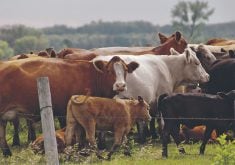In May, the standing committee on agriculture released its third report regarding the competitiveness of Canadian agriculture. The Canadian Federation of Agriculture presented to the committee and is encouraged that many of the CFA’s recommendations were reflected in the report. The committee recommended that the government:* Undertake a study into the level at which imported agricultural products do not meet the same standards required of Canadian producers and provide recommendations to resolve this matter* Introduce a policy of systematic evaluation of the effects of all labeling and food safety regulations, new or in force, on the competitiveness of Canada’s agriculture and agri-food sector, and take action to expedite the timeliness of the approval process without undermining the integrity of the system* Continue to maintain supply management and its three pillars as an integral business risk management program in Canada, and that market access for Canada’s agricultural exporters is strengthened so all sectors can continue to provide producers with a fair and equitable income* Update its capital cost allowance schedule for new farm equipment purchases, as proposed by the Association of Equipment Manufacturers and the North American Equipment Dealers Association* Follow up promptly on the conclusions of the study on levels of service in rail transport of grain currently being conducted by Transport Canada. The CFA submitted a report to Transport Canada as part of the stakeholder submission and hopes to see our recommendations reflected in the report when it is released in the fall.The committee also recommended that the CFIA’s policy on meat inspection fees be revised to eliminate billing for inspections during normal working hours. Also, the committee recommends that the regulations on approval of generic pesticides allow for the immediate marketing of generic products as soon as the required Pest Management Regulatory Agency scientific review is completed.The committee recommended that financial compensation be provided to the beef industry for the additional cost arising from the disposal of specified risk materials caused by the Canadian regulations on animal health. Without a competitive Canadian livestock industry, Canadian farmers have limited options when it comes time to market their animals. Helping the industry meet strict SRM disposal guidelines, especially when those guidelines are much more comprehensive than those met by our international competitors, was necessary to stem the loss of domestic processing facilities and ensure some Canadian capacity remained. However, in many regions there are no options for local producers to market their animals. The Atlantic provinces have been especially hard-hit and often have to bring their animals long distances to find a facility that will process them. The CFA hopes to work with the government and other industry groups to use the time that has been gained with this initiative to arrive at a long-term strategy that encourages development of local processing capacity and reduces the impact of our domestic SRM regulations.The CFA was surprised that the committee overturned its original recommendation of 85 percent Canadian content. This position had been advocated by many industry groups, including the CFA, and would have significantly increased the usefulness of the Product of Canada label. By moving to 98 percent, there is a real concern that the Product of Canada label will virtually disappear from Canadian store shelves due to the onerous restriction. This may have been mitigated if the government had implemented a publicity campaign to increase the brand knowledge of Product of Canada, but unfortunately this was not pursued. Including a list of exemptions complicates the labelling issue and adds to the confusion of both consumers and industry. The committee was guided by a dual objective: to improve the competitiveness of the Canadian agriculture and agri-food sector while protecting and enhancing return to farmers. The report was based on public hearings held by the committee between February and October 2009.
Read Also

Farmer ownership cannot be seen as a guarantee for success
It’s a powerful movement when people band together to form co-ops and credit unions, but member ownership is no guarantee of success.














